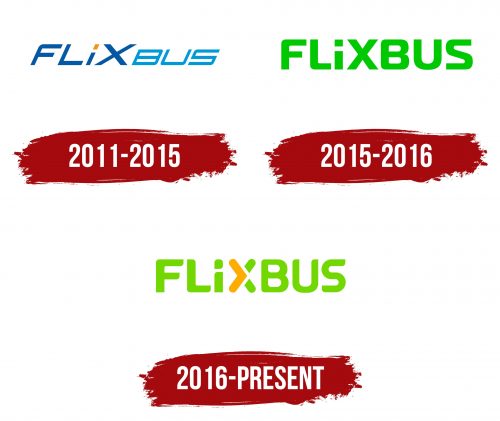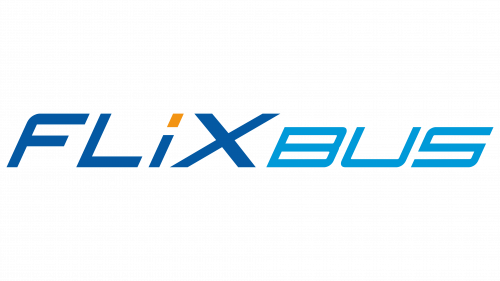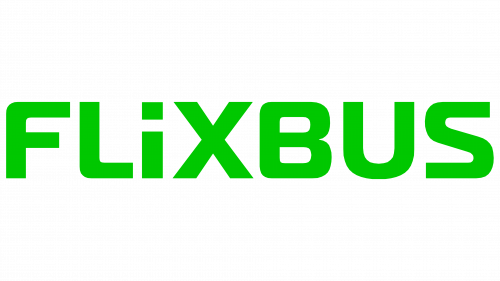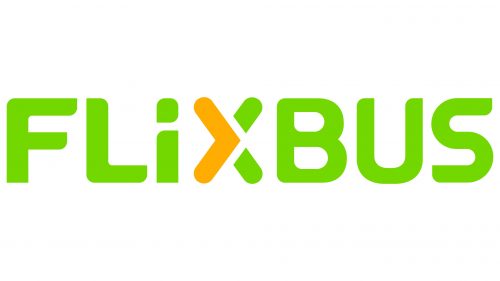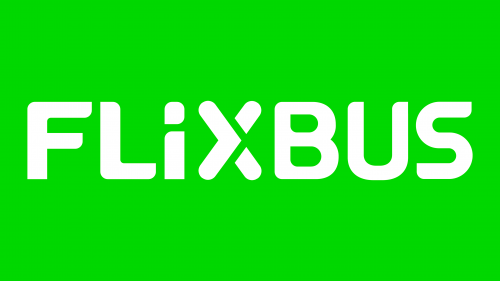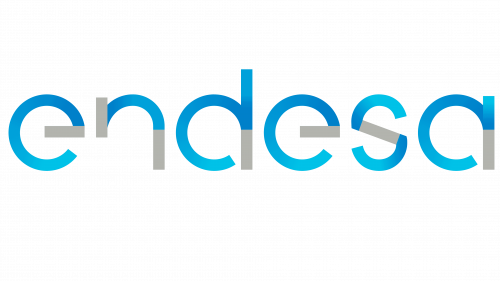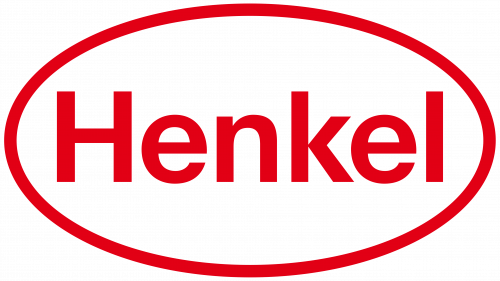The FlixBus logo reflects the brand’s key aspects: dynamism, reliability, affordability, and modernity. These qualities create an appealing and recognizable image that helps the German company stand out in the intercity bus transportation market.
FlixBus: Brand overview
FlixBus was founded in Munich, Germany, in 2013. Its founders were three young businesspeople: André Schwämmlein, Daniel Krauss, and Jochen Engert. The company’s goal was to liberalize the intercity bus industry.
When the business began, it was known as GoBus and operated several routes around Bavaria. The founders chose not to buy their fleet of buses, instead concentrating on developing a technological platform for ticketing and route management. Rather, they collaborated with nearby bus enterprises that furnished automobiles and chauffeurs.
The enterprise faced several difficulties in the first few months. GoBus had to battle for every passenger in the highly competitive intercity transit business. However, the firm’s creative strategy, which focused on using cutting-edge technology and putting the consumer’s needs first, started to pay off.
A rebranding occurred in 2014, and FlixBus became the new name. This choice aimed to develop a more recognizable and global brand. That same year, the company covered most of Germany with a major expansion of its route network.
The enterprise undertook an international expansion in 2015. The corporation started in the Netherlands, France, and Italy. This phase necessitated large financial outlays and the modification of the company plan to consider various national laws and market dynamics.
In continental Europe, the firm combined with rival Megabus in 2016 in a calculated move. Through this transaction, the company was able to grow its route network and solidify its position in the European market.
In 2017, the enterprise entered the Eastern European market. The business started in the region’s neighboring nations, including the Czech Republic, Poland, and Hungary. The same year saw the introduction of the first long-distance routes connecting important European cities.
A breakthrough occurred in 2018 when the firm entered the US market. The business started in California and progressively expanded its nationwide route network. This launch into the US market marked a critical turning point in the company’s international growth.
Several notable events marked 2019. The company demonstrated its dedication to environmental sustainability by launching its first electric intercity bus on the Paris-Amiens route. Additionally, the corporation strengthened its presence in the European intercity transport sector by acquiring Eurolines.
The same year, the enterprise introduced FlixTrain to Germany, expanding its activities beyond bus transportation. This made it possible to enter the rail passenger transport industry and provide clients with an additional means of transportation.
2020 was a difficult year for the firm and the transportation sector. Notwithstanding global challenges, the business expanded globally by establishing new routes in Brazil and Turkey.
A major milestone in the company’s history was reached in 2021 when the well-known American business Greyhound Lines was purchased for $172 million. With this acquisition, the firm acquired one of the most well-known brands in the bus transportation sector and solidified its position in the North American market.
2022 saw continued growth. The corporation pursued its global expansion plan by opening its first routes in Canada. Furthermore, the company kept funding the advancement of eco-friendly technologies, increasing the number of electric and hydrogen buses operating on its routes.
The enterprise continued its global expansion strategy in 2023, greatly boosting its market share in North America. The corporation boosted the number of trips on existing routes and introduced additional routes that connected important cities in the United States. This development enhanced the company’s standing as a global participant in the intercity bus transportation industry.
In the same year, the firm debuted its first range of electric intercity buses on the European market. The plan to lessen its carbon impact took a major step forward when these buses began operating on several routes in Germany and France. Environmental organizations supported this project, showcasing the firm’s commitment to sustainable development in the transportation sector.
Additionally, the company released an upgraded mobile app with new capabilities, such as an integrated platform for multimodal trip booking and a real-time bus tracking system. This invention enhanced the user experience and cemented the company’s standing as a transportation provider at the forefront of technology.
At the start of 2024, the enterprise declared it would enter the Asian market, with South Korea and Japan as its first stops. To expand globally and modify its business model for other regions, the company disclosed cooperation with regional transportation operators to begin offering its service in these nations.
Additionally, a cutting-edge loyalty scheme built around sustainable tourism was unveiled. Under this program, passengers can receive bonuses for traveling, selecting eco-friendly routes, and participating in environmental preservation activities.
Meaning and History
What is FlixBus?
It is a German bus company that offers affordable and convenient intercity travel options across Europe and the United States. The company operates an extensive network of routes connecting many cities and towns, providing an economical alternative to rail and air travel. The brand is known for its comfortable buses, free Wi-Fi, power outlets, and toilets, making long-distance travel even more enjoyable. The company offers a convenient online booking system and a mobile app for buying tickets and managing trips.
2011 – 2015
The old FlixBus logo features the name of a transportation company that was, at the time, an emerging startup. The designers presented the wordmark in a minimalist style, with clean forms, simple geometry, a limited color palette, and no three-dimensional effects. This design approach creates a positive impression of the brand, aligning with modern design trends.
Despite the minimalist approach, the emblem reflects the dynamism and movement central to fast travel. The energy is conveyed through an italic font, which evokes a sense of lightness and airiness. This weightlessness is associated with the comfort of traveling on intercity routes. The clean, straight lines create a sense of reliability, defining FlixBus as a responsible passenger carrier.
The modern style of the logo emphasizes the company’s innovation. This is evident in several details, including:
- The contrast in letter sizes, where “FLIX” is taller than “BUS.”
- The use of a lowercase “i” instead of an uppercase one
- The combination of sharp and rounded corners (as seen in “F,” “B,” and “S”)
The designers used visual accents to make the wordmark unique and memorable. In this regard, the “i” is the only lowercase letter in the text. The developers deliberately chose lowercase to highlight the dot above the “i creatively.” This small element catches the eye with its square shape and orange color, enhancing the logo’s dynamism.
The rest of the emblem is dark blue or light blue. Two different shades are used to separate the words “FLIX” and “BUS,” as they could appear bulky together. The company needed to create a sense of lightness to reflect the convenience and accessibility of its services.
The blue palette symbolizes the calmness, reliability, and comfort provided by the intercity carrier. The small orange dot adds a touch of vibrant emotion, representing the energy of fast-moving buses, the joy of satisfied passengers, and the dynamism of a growing company focused on expanding its route network.
2015 – 2016
This logo was used for a very short time, so its design can be considered experimental. It appears as an interim version between the old FlixBus wordmark and the new emblem adopted in 2016. The company name is presented in a pleasing, vibrant green color, which evokes mixed feelings of lightness and strength. The chosen shade signals the passenger carrier’s innovation and its strong sense of responsibility toward customers.
Green is the best color to represent the brand’s connection to travel, as it’s the color of the planet itself—its vast landscapes, forests, and fields. It inspires people to use FlixBus services and embark on a journey to enjoy the beauty of nature comfortably.
The font enhances the logo’s dynamism, with wide lines and rounded corners reminiscent of mini-roads. Each letter looks like a piece of a road: the “X” resembles an intersection, the “S” a winding serpentine, the “U” a sharp turn, and the “B” a complex highway interchange. Together, they create a sense of rapid movement, reflecting the company’s field of operation.
Notably, the “i” remains lowercase, even though all the other glyphs are uppercase. However, in this version, the dot above the “i” is not highlighted; it’s colored the same green as the rest of the wordmark. This makes the emblem cohesive, emphasizing FlixBus’s commitment to harmony, stability, and balance.
2016 – today
In 2016, the company underwent a global rebranding to create a unified system for all Flix sub-brands, including FlixTrain, FlixMobility, and FlixBus. The new visual identity reflected the passenger carrier’s evolution, which is considered one of Europe’s largest. The logo embodies dynamism, illustrating the continuous expansion of its intercity route network.
Everything is infused with energy—from the vibrant color to the fluid forms. The company name appears flexible due to an unusual font that blends sharp angles and rounded letter ends. Soft and sharp lines alternate evenly, creating a sense of smooth motion. This serves as a subtle invitation to travel.
The emblem doesn’t contain obvious symbols related to passenger transportation. However, it features some interesting details about FlixBus’s progressiveness and activity.
- The dot above the “i” has a teardrop shape, with its pointed part toward the lower corner. Due to this unique design, it resembles a comic book speech bubble, typically used to illustrate dialogue. This interactive element speaks directly to the company’s customers, inviting them to ride in a comfortable bus.
- The letter “X” comprises three elements: an orange shape resembling a closing angle bracket and two short green lines. The angle looks like an arrow, pointing to the right and breaking the adjacent line. This symbolizes the absence of boundaries and obstacles, suggesting that all routes are open to FlixBus.
The designers intentionally split the “X” into several segments to give the impression that the nearby lowercase “i” with its dot is an uppercase “I,” with its top part separated from the bottom by an elegant white line. All the other letters still evoke the idea of roads, reflecting the company’s extensive route network. The modern font with smooth curves makes the text visually dynamic without compromising readability.
The neon green color enhances the logo’s dynamism. It appears fresh and optimistic, conveying the positive emotions associated with travel. Green also symbolizes growth, aligning with the transportation company’s continuous development concept. The small orange element creates a bold contrast, drawing attention to the brand name. It adds a sense of movement, especially when combined with the triangular shape of the arrow. This symbolizes the fast buses that operate along FlixBus routes in Europe, Asia, and America.

